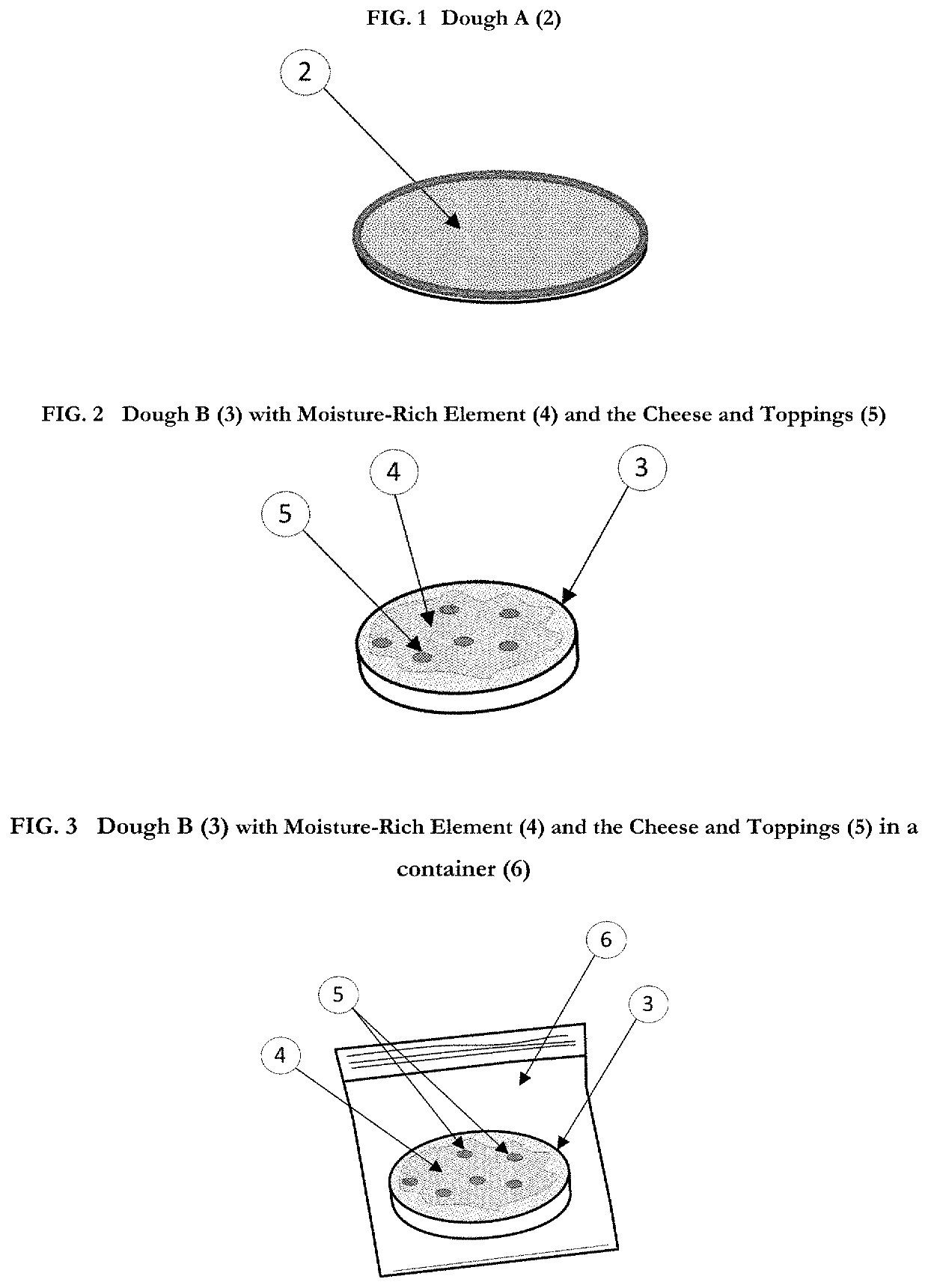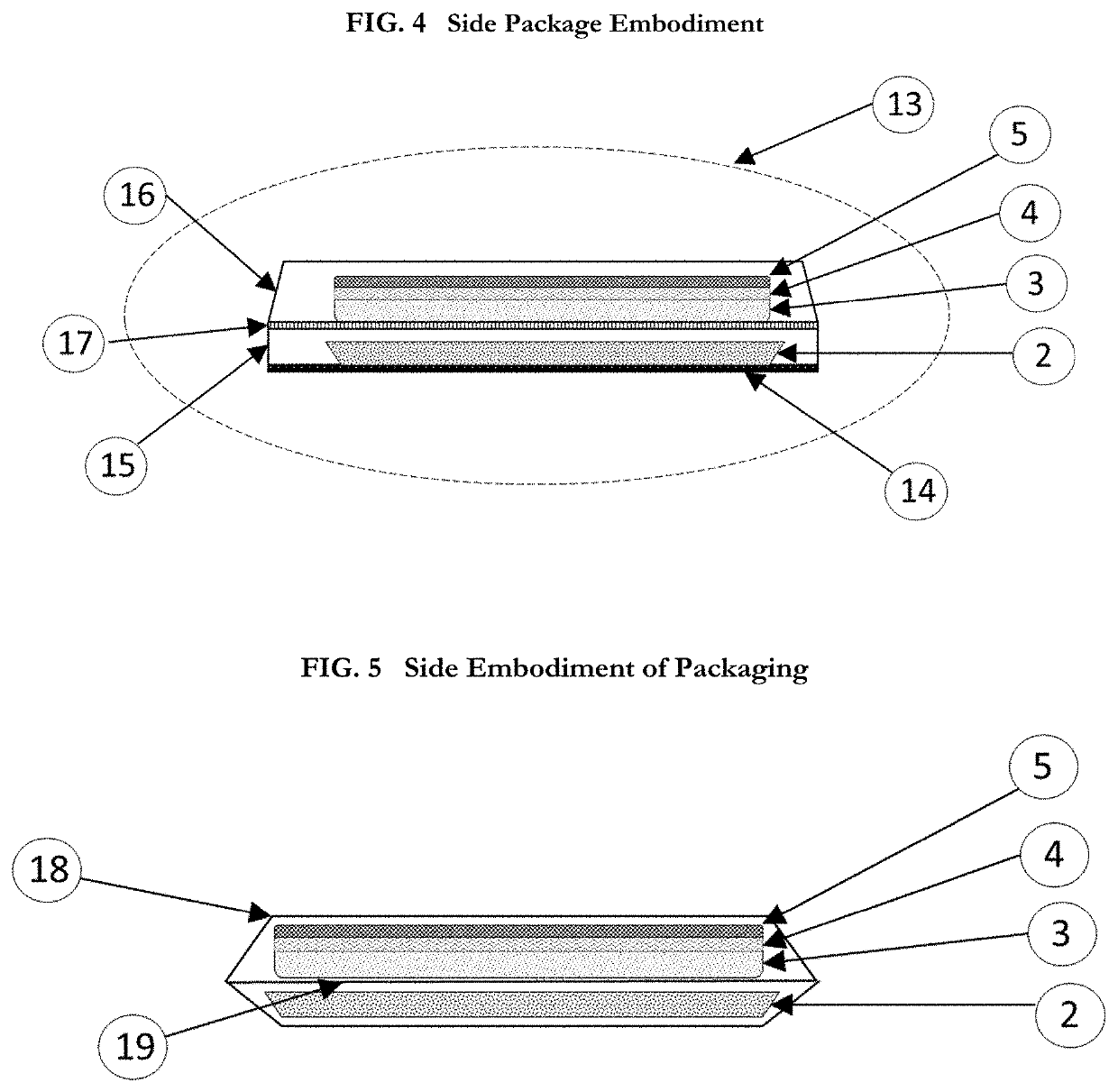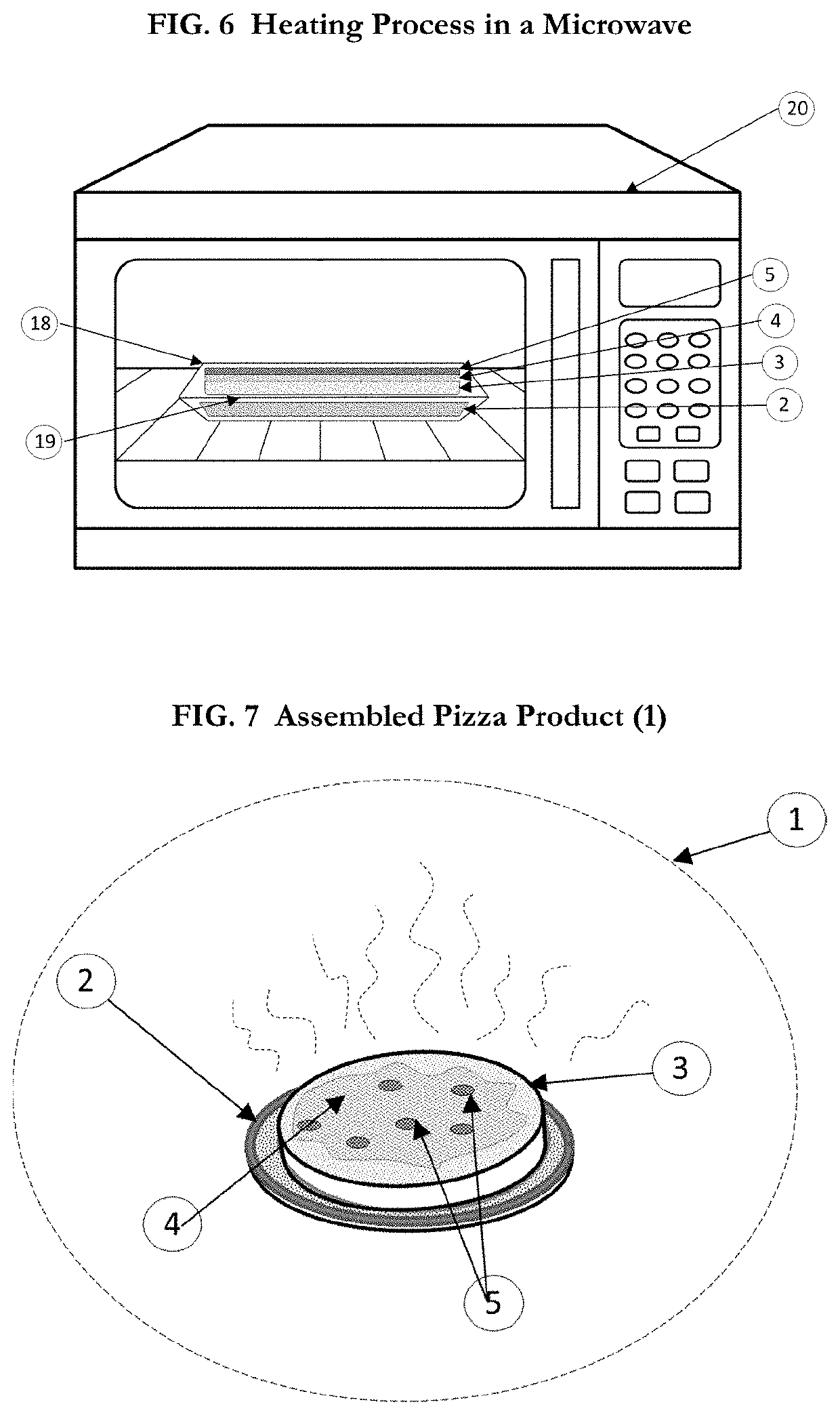Pizza product, packaging for a pizza product, and method of cooking and distribution for a pizza product
a technology for pizza products and pizzas, applied in the field of pizza products, can solve the problems of limited cooking capacity of a few pizzas, large size and cost, and small size, and achieve the effects of increasing production, increasing cooking time, and large size and cos
- Summary
- Abstract
- Description
- Claims
- Application Information
AI Technical Summary
Benefits of technology
Problems solved by technology
Method used
Image
Examples
example 1
[0094]The pizza product from the present invention was prepared in order to conduct a sensory panel and compare the crunchiness and moisture of the product compared to other products found in the market.
[0095]The first dough part, Dough A was manufactured from a mixture of flour of the 0000 type, water, margarine and salt, with food preservatives for maintaining its freshness. For the preparation of Dough A, a mix of 3 cups of flour, 1.5 tablespoons of margarine, 1 cup of warm water, and 1 teaspoon of salt was used.
[0096]The second dough, Part B, was manufactured from a white sandwich bread type cooked dough, specifically a by removing its crust and maintaining the white cooked dough as the spongy dough. Additionally, the moisture-rich product is a previously mixed and cooled gel flavored with tomato sauce.
[0097]The gel is prepared by using 500 grams of tomato sauce with a pizza flavor, and 5 grams of powered agar-agar. The tomato sauce is heated and the agar-agar powder is added to...
PUM
 Login to View More
Login to View More Abstract
Description
Claims
Application Information
 Login to View More
Login to View More - R&D
- Intellectual Property
- Life Sciences
- Materials
- Tech Scout
- Unparalleled Data Quality
- Higher Quality Content
- 60% Fewer Hallucinations
Browse by: Latest US Patents, China's latest patents, Technical Efficacy Thesaurus, Application Domain, Technology Topic, Popular Technical Reports.
© 2025 PatSnap. All rights reserved.Legal|Privacy policy|Modern Slavery Act Transparency Statement|Sitemap|About US| Contact US: help@patsnap.com



